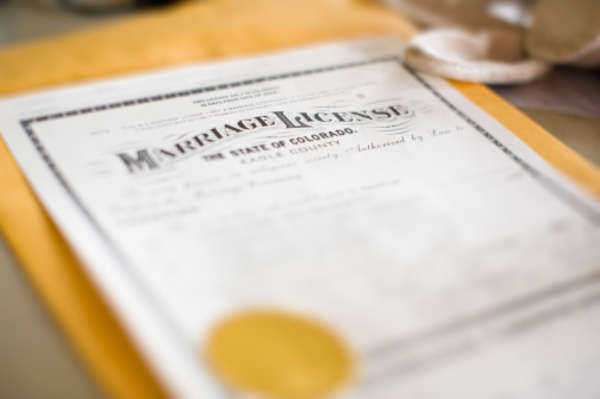
The Origins of Domestic Partnership
Domestic partnership, now a widely recognized legal union for couples, originated as a response to societal changes and evolving attitudes towards relationships. This article delves into the origins of domestic partnership, exploring its historical context, the driving factors behind its creation, and the transformation it has undergone over time.
1. Historical Context:
a) Pre-20th Century: Traditional marriage was viewed as the primary and often exclusive form of legal recognition for committed relationships. However, societal attitudes began to shift as people questioned the strict limitations imposed by marriage on personal choices and freedoms.
b) LGBTQ+ Activism: In the mid-20th century, the LGBTQ+ rights movement emerged, seeking recognition and protection for same-sex relationships. The fight for legal recognition of these relationships played a significant role in the establishment of domestic partnerships.
2. Milestones in Domestic Partnership Recognition:
a) Denmark: In 1989, Denmark became the first country to introduce registered partnerships, providing legal recognition and rights to same-sex couples. This marked a groundbreaking moment in the history of domestic partnerships.
b) Expanding Across Europe: Following Denmark’s lead, several European countries, such as Norway, Sweden, and Germany, began adopting domestic partnership laws, granting same-sex couples legal recognition and protections.
c) United States: In the United States, the domestic partnership movement gained momentum in the late 20th century. The concept emerged as a response to the legal barriers preventing same-sex couples from marrying.
3. Evolution and Expansion:
a) Legalizing Same-Sex Marriage: The fight for marriage equality gained traction globally in the early 21st century. As more countries and jurisdictions legally recognized same-sex marriage, domestic partnerships began to lose significance in some areas.
b) Shift Towards Inclusive Recognition: Instead of limiting the benefits of domestic partnerships to same-sex couples, many jurisdictions expanded their scope to include heterosexual couples as well. This change aimed to provide legal recognition and protection to a broader range of relationships, irrespective of sexual orientation.
c) Diverse Relationship Recognition: In recent years, there has been a shift towards recognizing diverse relationships beyond traditional marriage or domestic partnerships. Some jurisdictions have introduced civil unions, cohabitation agreements, or other legal arrangements to accommodate various personal and cultural preferences.
4. Benefits and Contemporary Usage:
a) Legal Rights: Domestic partnerships offer legal rights and protections that are similar to those of married couples. These can include inheritance rights, healthcare coverage, joint property ownership, and parental rights.
b) Financial Advantages: Entering into a domestic partnership can provide financial benefits such as tax advantages, shared insurance policies, and the ability to make joint financial decisions.
c) Social and Emotional Recognition: Domestic partnerships play a significant role in fostering social acceptance and validation of diverse relationships. They help promote inclusivity and contribute to breaking down societal stigmas surrounding non-traditional partnerships.
Conclusion:
The origins of domestic partnership lie in the need to provide legal recognition and protection for relationships outside the realm of traditional marriage. Stemming from LGBTQ+ activism and societal changes, domestic partnerships have evolved over time to encompass a broader range of relationships. They provide legal rights, financial benefits, and emotional recognition to couples who choose not to marry or are prohibited from doing so. As society continues to evolve, it is crucial to cultivate inclusive legal frameworks that respect and protect the rights of all individuals, regardless of their relationship choices.
Some states have adopted domestic partnership laws, while others have not. In fact, there are about ten states that currently legally recognize domestic partnerships. In fact, laws change quickly and the number of states that legally recognize same sex relationships in any form, fluctuates.
Currently, domestic partnerships, in title, are seen as outdated by some members of the LGBT community. In fact, many are pushing for a legally defined, same sex marriage so that couples are assured of receiving equal rights in regards to the legality of their relationship.
In the late seventies, a man in California lost his partner and requested to be paid for bereavement time. His employer refused to pay him and the courts agreed. The decision was made because they had no proof as to the validity of the relationship. The case was the first to use the term, domestic partnership, and the first to decide against a domestic partnership law.
Later, in California, Berkeley students defined the term and pushed for a domestic partnership law that would legally recognize same sex relationships in the city. The City council voted on the proposition and those that voted against it, later failed to win reelection. The City Council did not adopt a domestic partnership law.
In fact, the Berkeley school board may have been the first to approve a domestic partnership law that would recognize same sex relationships. However, the Berkeley city council eventually passed their own domestic partnership law and a registry was created in 1991.
The acceptance of domestic partnership laws began to become a nationwide issue. Cities throughout California, began to pass their own domestic partnership laws. Eventually, California passed state wide domestic partnerships laws and became the first state to do so.
Six years later, California began to extend more rights to domestic partners and it was the first state to do so without intervention from the courts. In the interim, other states began to adopt domestic partnership laws. Each state offers unique benefits to couples that are in a legally recognized domestic partnership.
Domestic partnership laws are currently in effect in about 1/5 of states in the Country. However, each state’s laws vary greatly as far as which rights and responsibilities couples are entitled to. In some cases, couples are entitled to shared health benefits, and other times they are not.
In addition, some states view domestic partnerships as an alternative to opposite sex marriage, which grants couples all of the same rights and responsibilities. While domestic partnerships were the first step to ensuring equal rights for the LGBT community, many same sex couples are now striving to have their relationship defined as a legally recognized marriage.





















